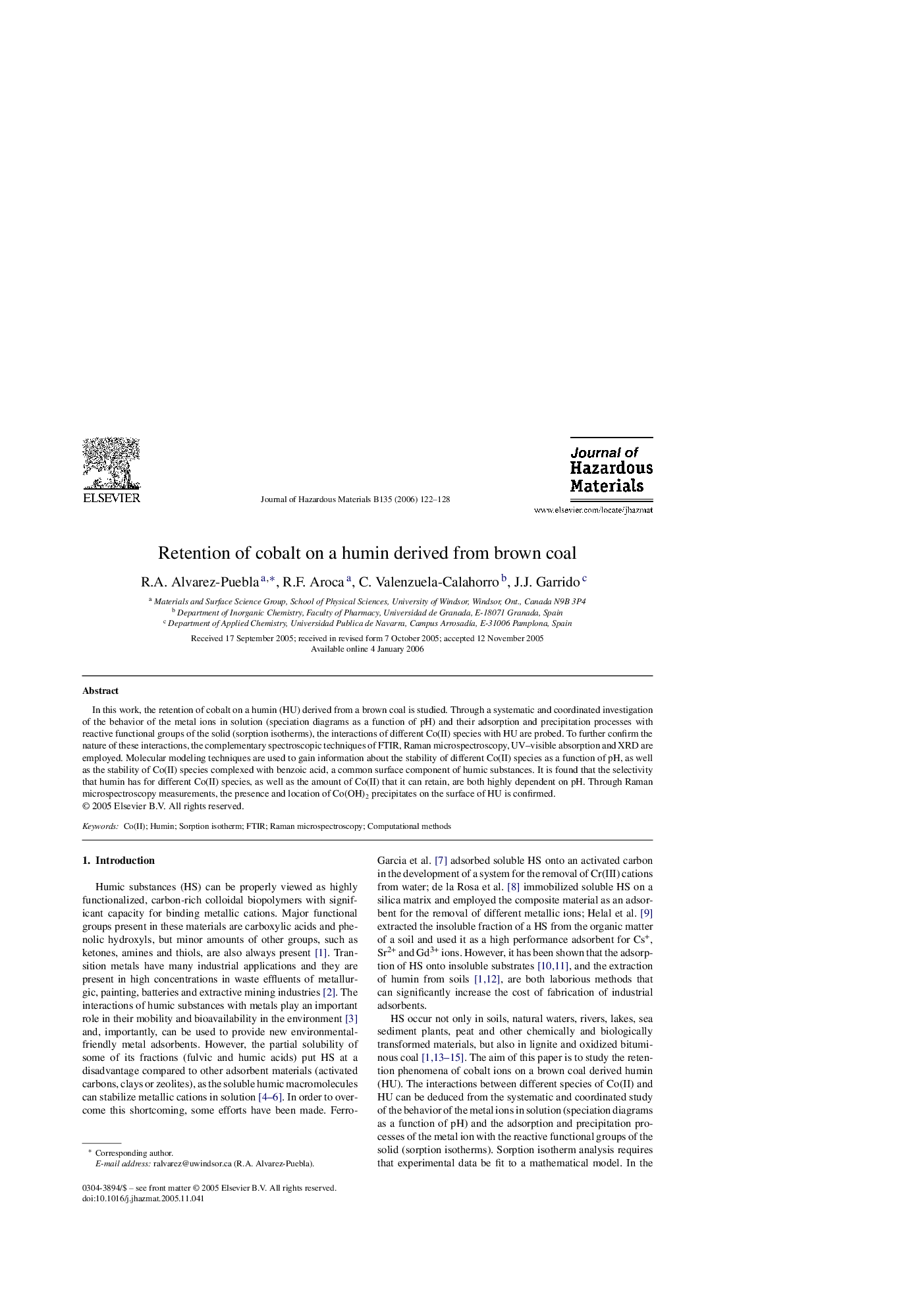| Article ID | Journal | Published Year | Pages | File Type |
|---|---|---|---|---|
| 585736 | Journal of Hazardous Materials | 2006 | 7 Pages |
In this work, the retention of cobalt on a humin (HU) derived from a brown coal is studied. Through a systematic and coordinated investigation of the behavior of the metal ions in solution (speciation diagrams as a function of pH) and their adsorption and precipitation processes with reactive functional groups of the solid (sorption isotherms), the interactions of different Co(II) species with HU are probed. To further confirm the nature of these interactions, the complementary spectroscopic techniques of FTIR, Raman microspectroscopy, UV–visible absorption and XRD are employed. Molecular modeling techniques are used to gain information about the stability of different Co(II) species as a function of pH, as well as the stability of Co(II) species complexed with benzoic acid, a common surface component of humic substances. It is found that the selectivity that humin has for different Co(II) species, as well as the amount of Co(II) that it can retain, are both highly dependent on pH. Through Raman microspectroscopy measurements, the presence and location of Co(OH)2 precipitates on the surface of HU is confirmed.
